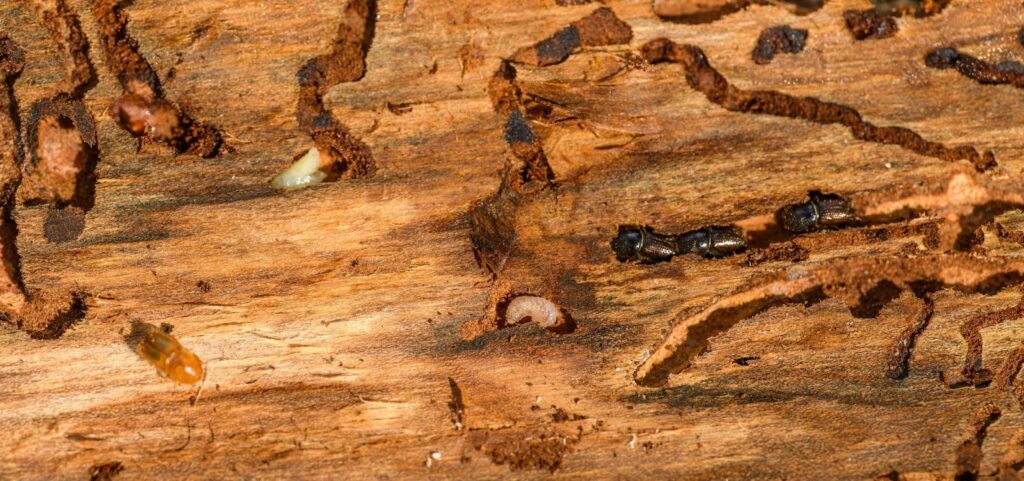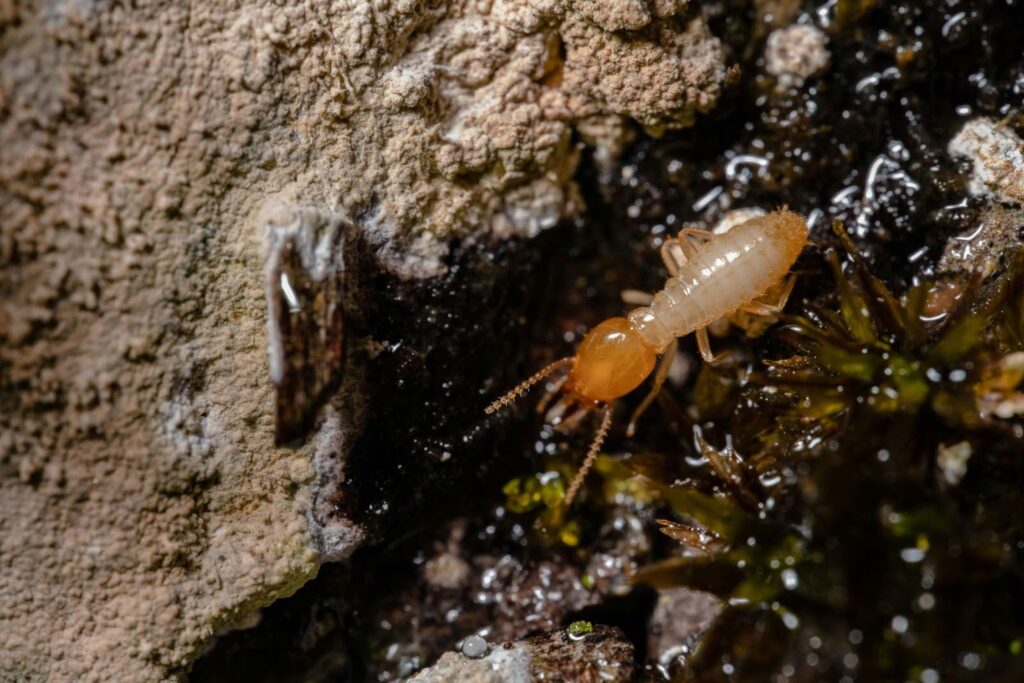Spring in Columbus means a lot of wonderful things to look forward to, from patio season at Short North to weekend hikes at Hocking Hills.
Unfortunately, it’s also the time when termites start emerging. With more than 600,000 homes impacted by termites each year across the U.S., these pests aren’t just a nuisance. They’re a financial headache, and a liability.
For Columbus homeowners, especially those with older foundations or homes in moisture-heavy areas, knowing what’s the best termite treatment matters more than you think.
Read on as we cover the top termite treatments, help you find the best fit for homes in Franklin or Delaware County, and explain why expert pest control could save you both time and money in the long run.
What’s the Best Termite Treatment in Columbus?

When it comes to stopping termites in Ohio, not all solutions are created equal. Here are the main types of termite treatments:
1. Bait Systems
Bait systems target termites where they’re most active. These systems use strategically placed bait stations around your property. Termites consume the bait and carry it back to the colony, wiping out the entire infestation over time.
- Best For: Large colonies spread out across the property.
- Pros: Targets the source of the problem effectively.
- Cons: Can take longer to see results since it relies on termites sharing the bait.
2. Liquid Barrier Treatments
Liquid termiticides are applied around the perimeter of your home, creating a barrier that repels and kills termites that come into contact with it. This method focuses on preventing termites from entering your home in the first place.
- Best For: Homes with current termite infestations or at high risk of termites.
- Pros: Immediate results; can provide long-lasting protection.
- Cons: Requires thorough application, often by professionals.
3. Spot Treatments
For smaller infestations, spot treatments can be an effective option. These involve applying termiticides directly to the areas where termites are present, like damaged wood or visible mud tubes.
- Best For: Early detection of termites or limited infestations.
- Pros: Quick and localized.
- Cons: Doesn’t address widespread colonies.
What’s Best for Columbus Homes?

With all your options in mind, what’s the best termite treatment to invest your money in?
Homes in Columbus are often at risk due to conditions such as moisture and older construction, especially in neighborhoods like German Village or Clintonville, where charming historic homes are abundant. Unfortunately, wood-to-ground contact and higher humidity levels make properties in these areas more susceptible to termites.
For homeowners here, liquid barrier treatments and bait systems tend to be the most effective. Liquid barrier treatments offer quick protection for older foundations, while bait systems address larger infestations common in moisture-rich environments.
You might be curious about DIY options. Yes, DIY termite treatments exist, and may get rid of a few termites hanging around out in the open. But here’s the problem: termites are sneaky and cause thousands of dollars in damage before you even notice them.
No over-the-counter product can match the precision and tools of a licensed pest professional. For reliable and long-term protection, we always recommend turning to professionals, like our team at Green Shield Pest Pros.
Did You Know?
Termite infestations cost homeowners an average of anywhere between $1,800 and $3,000 annually in repairs. That’s right! These tiny pests pack a mighty financial punch. Not only that, but some lenders or state policies may even require you to get a termite inspection before refinancing or selling your home. Yet another reason to stay vigilant with termite prevention and treatment!
Protect Your Home from Termites with Green Shield

Don’t leave your home’s safety to chance. Whether it’s a historic house on Broad Street or a new build in Dublin, Green Shield is here to provide expert termite control tailored to Columbus residents.
Schedule your free inspection today and find out how to keep your home safe from termites tomorrow.
FAQ
How do I know if I have termites?
Look for swarmers (which resemble winged ants), mud tubes along walls or foundations, and damaged wood. These are telltale signs of termite activity.
Can I use mulch around my home with termites?
Mulch can attract termites, especially when it makes direct wood-to-ground contact. Swap mulch for gravel near your home’s foundation to reduce risk.
How often do I need termite treatment?
This depends on the treatment. Liquid barriers can last up to 10 years, while bait systems require monitoring every few months.
Are termites covered by homeowners insurance?
Unfortunately, most insurance policies don’t cover termite damage since it’s considered preventable with routine maintenance.
How long does professional termite treatment take?
Most treatments are completed in one day, but the timeline for eliminating termites (especially with bait systems) can take weeks.
